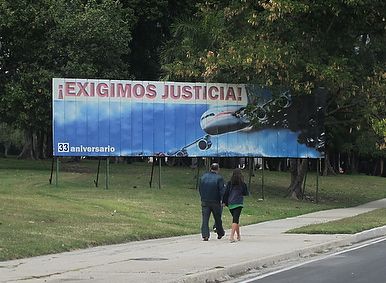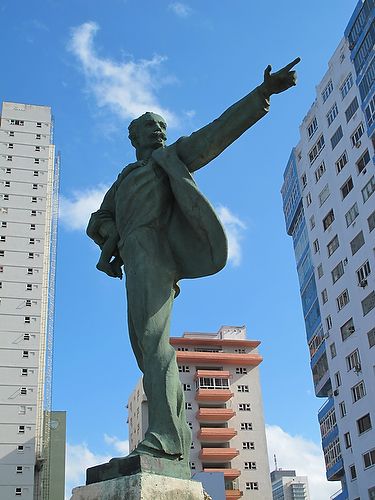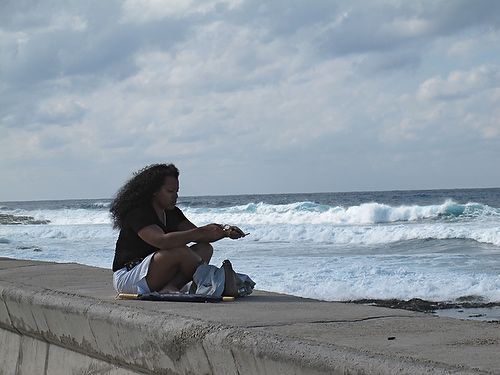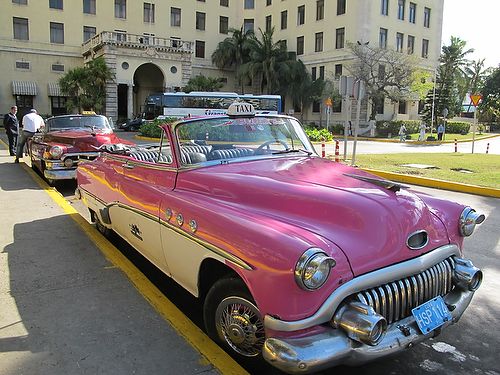This time, the second time was a charm.
José Martí International Airport coasted into view, the city of Havana in sharp relief in the sunny background. This time I was headed for the main terminal, not the tiny old dark one reserved for arrivals from Miami. And this time, the journalist visa was firmly in my hand and I was ready.
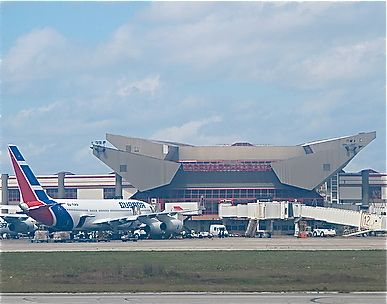
I walked through the waiting area where I had spent a long, cold night on my previous visit to Havana, when I was denied entry due to visa problems, led to the main terminal to spend the night and shipped back, unceremoniously, on the next flight back to Miami. There against the wall was the red plastic bench where I had slept; there were the windows where customs agents had approved scores of travelers as I looked on morosely.
This time, I gave the bench a sidelong glance and took my place in line.
The interview was long and detailed – where was I staying, who was I writing for, who were my contacts, where was I planning to go, where had I worked before, the questions went on and on. But Julio Cesar, the official who interviewed me was smiling this time, reassuring me – “It’s just a procedure, don’t worry.” Last time I had received no such reassurances.
As I waited, two friendly dogs, a cocker spaniel and a black Labrador, sniffed curiously among the luggage and the travelers, tails wagging madly all the while. Their relaxed handlers clucked softly to bid them to return, and they responded – a marked contrast to the severe German shepherds, leashed to equally severe officers, whom I’ve seen sniffing about in U.S. customs.
Finally, Julio Cesar gave me a nod and a smile. “Bienvenidos a Cuba,” he said, and showed me the exit. I was elated.
My taxi driver, Pedro, was my first tour guide. A jovial gentleman with a deep sense of pride for his country, he explained to me the significance of billboards – like the one that portrayed George W. Bush and Orlando Bosch, a Bay of Pigs operative who was convicted of conspiring in the bombing of a Cuban airliner in 1976 that killed 73 people. Bush had granted a pardon to Bosch, leading to the words on the billboard:
“A nation that harbors terrorists is a terrorist nation.”
Pedro made sure that I understood the meaning of that billboard, and one that followed.
“You know about the Five Heroes, right?”
I wasn’t sure.
“There they are: René, Ramón, Tony, Fernando and Gerardo,” he recited.
I’d never heard it referred to in quite that way, of course, but I recalled the case: Five Cubans convicted of espionage in the U.S. and sentenced, from 15 years to life. In fact they had been spying, but not on the U.S. government; rather, they had infiltrated extremist right-wing Cuban terrorist groups that were plotting a bombing attack on Cuba. It was one of many attacks on Cuba that have gone unpunished, as U.S. policy is not to prosecute Cuban-American terrorists. When the “Cuban Five” uncovered the bombing plot, Cuban authorities contacted U.S. officials to report the conspiracy. Instead of convicting the terrorists, U.S. officials tracked down the five and convicted them of espionage. An international campaign for their release has been mounted, and more can be read about it at www.freethefive.org.
Along with Elián González, another face on a billboard as we entered town, the “Five Heroes” are prominently displayed around town. Elián, for those who may have forgotten, was the youngster who was picked up by the Coast Guard after his mother and 10 others died trying to escape to Miami on a boat that sank. Elián was given the chance to stay in the U.S. but opted to return to his homeland and his father.
Finally I arrived at the Hotel Nacional, the national hotel of Cuba, where I’m spending the first night. It’s really as grand and beautiful as they say, and has a storied history, which I’ll be writing about after I receive a tour.
Meanwhile I took a walk along the famous Malecón, the seawall I’ve dreamed of walking for years, where locals and tourists took the sun and watched the crashing waves and the cobalt-blue waters beyond.
I stopped for a simple but delicious lunch of fresh fish, salad and rice, served with a real Cuban mojito, at an outdoor café called Amigos de Fangio, named for the famous Argentine racecar driver. As I perused the collection of painted green tiles in front, most of them dedicated to auto or motorcycle racers, a local gentleman who called himself John, wearing a baseball cap with the letters “USA,” struck up a conversation. An organizer of a local motorcycle club, he had also organized the Fangio tiles project and explained to me the story behind each tile: the first woman to get her drivers’ license in Cuba, the first to ride a motorcycle, a beloved mechanic who, when he died, drew hundreds to his funeral.
I invited John to join me for a mojito and he regaled me with stories. He showed me his ID card, which identified him as Juan. “My parents named me John, and I was John until the revolution,” he explained. “Then with all the problems – you know, John Kennedy, the Bay of Pigs…. Well, it just wasn’t possible to have that name anymore, and the government changed it.”
He wanted to be sure that I knew, however, that he had no hard feelings about the difficult past between our countries. “We Cubans have nothing against the American people,” he declared. “It’s the government we have a problem with.”
He didn’t dwell on the politics, however, preferring to talk about motorcycles and vintage cars – two passions that reminded me of my father, I think the two of them would have hit it off, had they been able to communicate.
Tomorrow I’ll meet with government officials and get my credentials and make my itinerary for the nine days in Cuba that await me. Meanwhile, here’s a slide-show tour of what I saw on my first day.
Created with Admarket’s flickrSLiDR.
